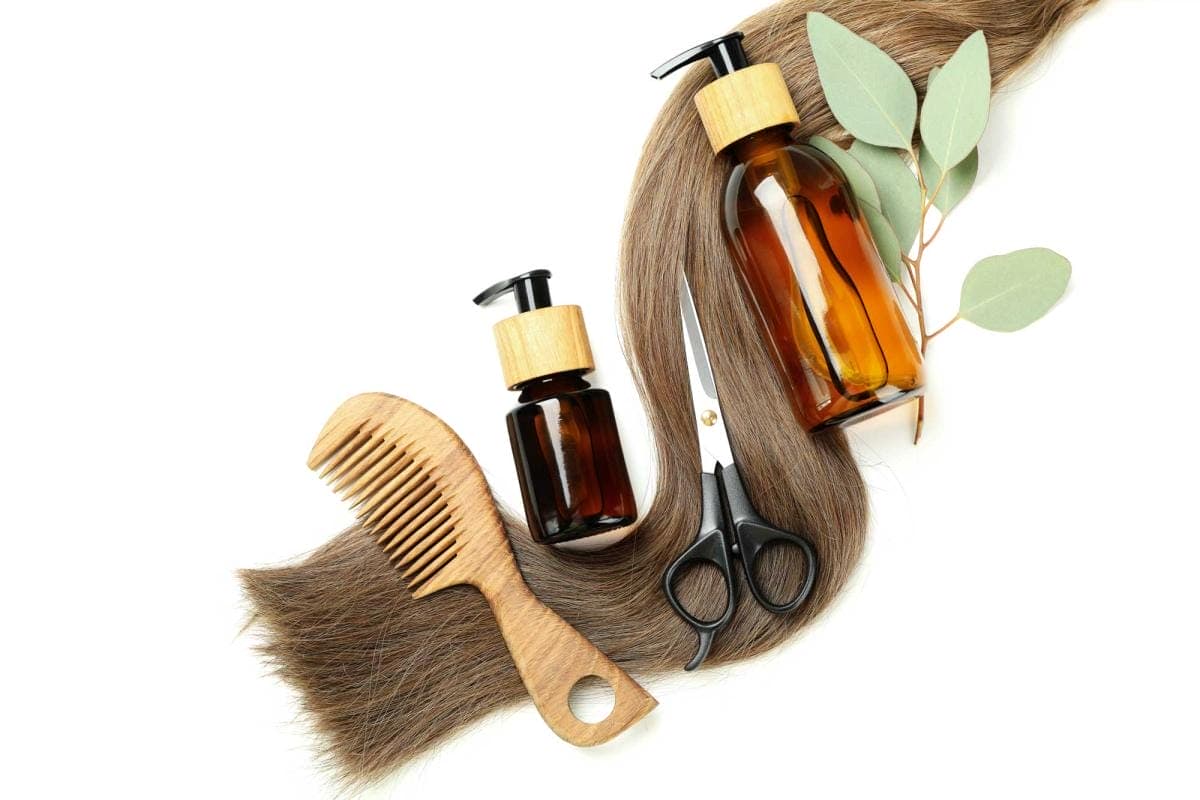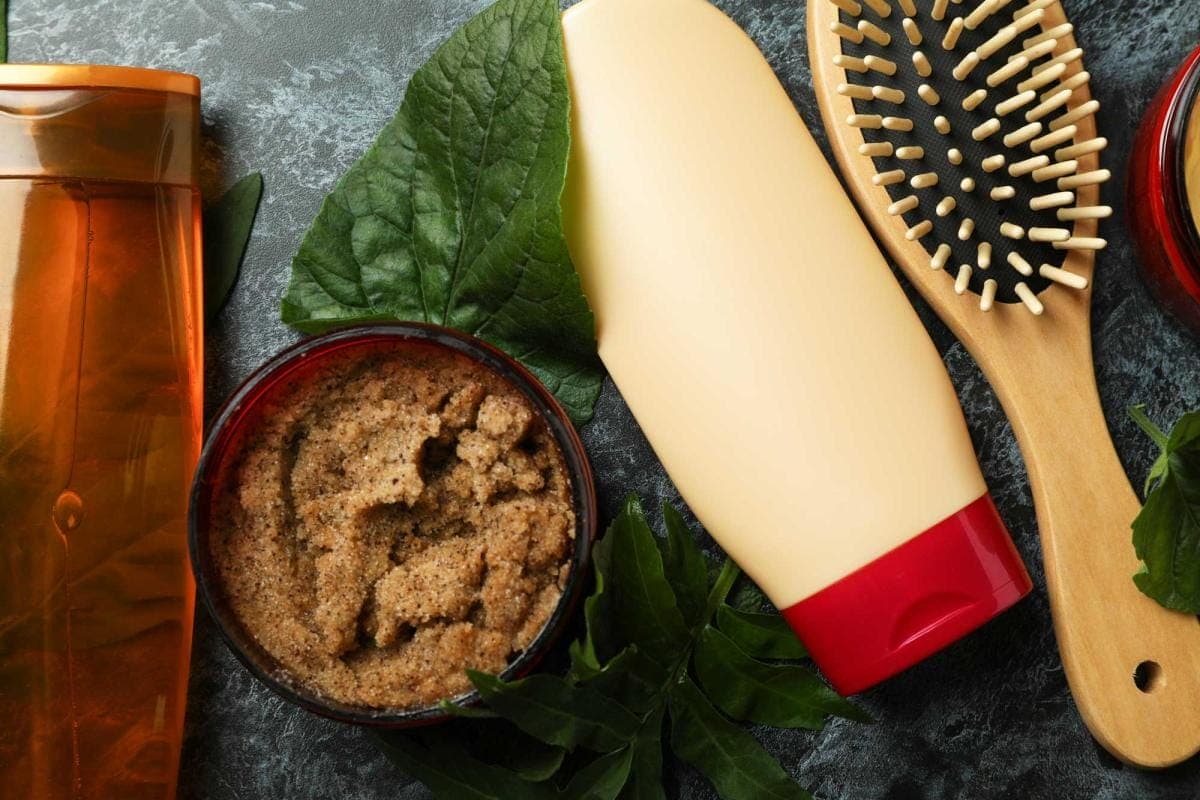Beauty, Trends & Opinions
Making the Leap to Natural Haircare
Your shampoo bottle probably looks innocent, yet every rinse may be a tiny chemistry experiment swirling down the drain. Synthetic surfactants lift grease, silicones gloss each strand, and artificial fragrances linger long after your hair dries. These lab‑born ingredients work fast, no question, but more consumers now wonder what happens when “fast” collides with “safety” and “sustainability.” I felt that tug myself a few years ago – and discovered that moving to natural formulas is less a snap decision than a mindful journey. Stick with me, because by the end of this read, you’ll feel ready to swap suds with confidence and never look back.
Some numbers reveal why the conversation keeps growing louder. Analysts peg the natural haircare market at $10.17 billion in 2024, with forecasters betting on annual growth near 9.4 percent through 2030. Another recent report notes that women already control more than 71 percent of those dollars, while men represent the fastest‑rising segment. In short, the shift is no boutique fad; it’s mainstream momentum powered by people like us who are tired of ingredient lists that read like industrial glossaries.
Yet statistics only paint half the picture. Day‑to‑day life raises practical questions: Will my hair rebel when I ditch silicones? How do I decode the label maze of botanical names? And what about that dreaded “transition phase” when locks feel dull or heavy? Let’s tackle those worries one by one, sprinkle in science, and guide you through a smooth, scalp‑friendly handoff from conventional to natural care.
You’ll see no numbered checklists here – just flowing paragraphs, exactly how a conversation would unfold if we met over coffee and compared curls. Ready to begin? Let’s step into the routine‑reshaping details that await your strands.
Subtle Signs It’s Time to Switch
You might notice your hair getting oily quicker than it used to even though you haven’t changed your styling habits. Or maybe you need stronger detergents just to feel “clean,” only to face itchy flakes hours later. Those are red flags that silicone buildup and harsh sulfates have upset your scalp’s microbiome. Sneaky ingredient residues can also block color molecules, leaving dyes dull in record time. If any of this rings familiar, your hair is sending a memo: “Let me breathe.”
Daily heat styling often magnifies the issue. Hot tools essentially bake synthetic polymers onto the cuticle. Over time, the result is a stubborn plastic film that repels moisture rather than sealing it in. Natural cleansers based on mild coconut‑derived agents (look for “coco‑glucoside” or “sodium cocoyl glutamate”) lift that film gradually without stripping precious lipids. Patience pays dividends, because once build‑up fades, hydration finally reaches the cortex again.
Color‑treated hair sings similar complaints. Sulfates jar open the cuticle while accelerating dye loss, forcing more frequent salon visits. Botanical blends with oat amino acids or quinoa proteins latch onto damaged sites, plugging microscopic cracks and slowing pigment escape. Eventually you’ll save money on retouches – and who doesn’t love that?

Resetting Expectations for the Transition
Here’s the truth: your first few washes with a sulfate‑free, silicone‑free shampoo may feel underwhelming. Suds look sparse because natural cleansers don’t foam like lauryl sulfate. Slip vanishes because there’s no dimethicone coating each strand. Stay calm. That “missing” slip tells you you’re rinsing away residue rather than slathering on more.
During the initial two weeks, hair often feels heavier. Picture decades of polymers finally dislodging, then clinging loosely until each rinse carries them away. A gentle apple‑cider‑vinegar rinse (one tablespoon in eight ounces of cool water) after shampoo can hasten their exit. The acidic pH tightens cuticles too, lending interim shine while nature’s nutrients rebuild internal strength.
Some people panic at the sight of extra frizz. Remember that silicones create fake smoothness by wrapping the shaft; once gone, your true texture appears. Instead of fighting it, nourish it. Lightweight plant oils such as argan or marula penetrate quickly and contain antioxidants to limit UV‑induced breakage. Over a few wash cycles you’ll notice curls clumping more uniformly, not less.
Label Literacy: Decoding Natural Formulas
Marketing loves buzzwords, so a bottle may shout “natural” while hiding synthetic fragrance or petro‑based preservatives. Flip it over and scan ingredient lists with a detective’s eye. Botanical Latin names are a good sign – Camellia sinensis (green tea) or Rosa canina (rosehip) oil, for example – yet position matters. Ingredients are listed in descending order by weight. If your sandalwood oil appears after phenoxyethanol, expect only a trace.
Essential oils fragrance many natural products but can irritate sensitive scalps when used indiscriminately. Choose brands that specify precise chemotypes and dilution rates or select fragrance‑free lines until your scalp barrier recovers. Likewise, “preservative‑free” claims sound appealing but risk microbial growth; safer systems use radish‑root ferment or glyceryl caprylate – plant‑derived and eco‑certified.
Sustainability extends beyond ingredients. Look for recyclable aluminum bottles, post‑consumer‑recycled plastic, or refill pouches. One industry study revealed that one out of every three beauty products sold in the United States now carries a “clean” or “green” claim, underscoring shoppers’ demand for cradle‑to‑cradle accountability. Your purchases wield real influence on packaging innovation.
Building a Natural Haircare Routine Step by Step
Start with cleansers, because they create the foundation for every subsequent product. Pick a shampoo targeting your main concern – hydration, volume, or scalp calm – and commit to using it for at least four washes before judging results. Pair it with a compatible conditioner featuring fatty‑acid‑rich butters such as mango or cupuaçu. Those emollients mimic the hair’s native sebum, cushioning cuticles rather than masking them.
Next, rethink leave‑ins. Conventional serums rely on silicones for shine, but cold‑pressed jojoba oil is structurally similar to our own sebum and sinks in without greasy residue. For heat protection, rice‑protein sprays form a natural lattice around the shaft, reducing thermal damage by up to 30 percent in laboratory tests. Styling gels based on flax‑seed mucilage or aloe juice deliver soft hold and rinse out with plain water – no clarifying shampoo required.
Finally, schedule a monthly clarifying treatment using either kaolin clay or activated charcoal masks. They magnetize environmental pollutants and leftover product, resetting your scalp ecosystem. You’ll feel the difference: lighter roots, springier curls, brighter color.
Listening to Your Scalp
Everyone’s transition timeline differs. Straight, fine hair often purges silicone faster but struggles with volume while sebaceous glands recalibrate. Coily textures may need heavier butters to stave off dryness yet benefit from reduced breakage as protein balance returns. Keep notes – yes, an actual diary – detailing wash days, products, humidity, and scalp feel. Patterns emerge within weeks, guiding tweaks far better than generic advice on social media.
Watch for persistent itching, rash, or excessive shedding beyond normal 50‑100 hairs per day. Although rare, botanical allergies do occur. Patch‑test masks and oils on the inner arm for 24 hours before slathering your roots. If redness appears, eliminate that ingredient family and explore alternatives such as hemp instead of coconut oil or glycerin‑free formulas in low‑dew‑point climates.

The Environmental Bonus
Choosing natural haircare isn’t just personal – our watersheds thank you too. Many common conditioner silicones resist biodegradation, accumulating in aquatic sediment where they can impair fish gill function. Plant oils and sugar‑based surfactants break down quickly under typical wastewater‑treatment conditions. Meanwhile, sustainably harvested ingredients like babassu oil support local economies and preserve rainforest biodiversity better than petroleum‑derived waxes.
Manufacturers increasingly measure their carbon footprints, and some plant a tree for every bottle sold or power production lines with solar arrays. By reading company impact reports and favoring transparent brands, you help steer the entire beauty sector toward greener operations.
Frequently Asked Questions
How long does the transition phase last? In most cases two to six weeks. Hair length, prior product build‑up, and scalp oiliness influence the timeline. Stick with your natural routine for at least one full growth cycle (about 30 days) before reassessing.
Will natural shampoo preserve my color better? Yes. Without harsh sulfates, cuticles stay flatter, so pigment molecules leach out more slowly. Using antioxidant‑rich conditioners can extend vibrancy even further.
Can I mix conventional and natural products? You can, but doing so may slow detox. Dimethicone‑laden serums, for instance, negate a silicone‑free shampoo’s work. For best results, commit fully for a month, then experiment sparingly.
What if my hair feels waxy? That sensation often signals residual silicones lifting away. A diluted apple‑cider‑vinegar rinse or a gentle clay mask accelerates removal without stripping.
Do natural products expire faster? Generally, yes, because they rely on milder preservatives. Check for airtight packaging and use within twelve months of opening. Store away from direct sunlight to prolong potency.




